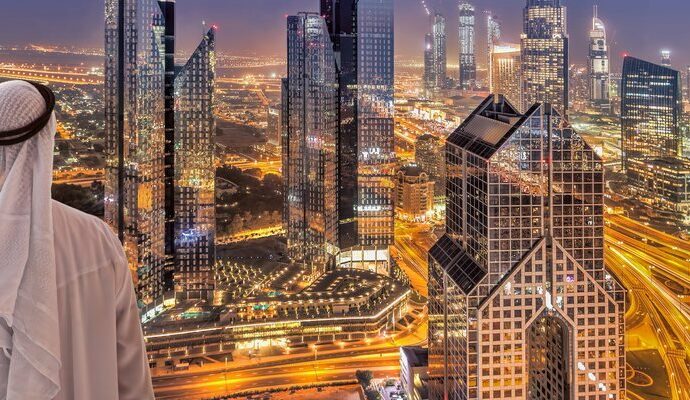What makes a city smart? In general, intelligent IoT solutions that optimize infrastructure and government are required to better engage citizens in service management. Sensors, networks, and applications gather data on energy consumption, traffic volume and patterns, pollution levels, and other topics, which is then analyzed and used to correct and predict usage and patterns.
What makes a city smart? In general, intelligent IoT solutions that optimize infrastructure and government are required to better engage citizens in service management. Sensors, networks, and applications gather data on energy consumption, traffic volume and patterns, pollution levels, and other topics, which is then analyzed and used to correct and predict usage and patterns. Making that data available to everyone via open-access systems enables citizens and businesses to use it for their own purposes.
Perhaps more so, smart cities require leaders with a long-term vision and people committed to collaboration. Multiple agencies, consultants, and private firms track the development of smart cities, and there are eight generally recognized subjects that combine to make a city smart:
• Mobility
• Healthcare
• Security
• Water
• Energy
• Engagement and Community
• Economic Development and Housing
• Waste
Three layers work together within each of those subjects to make a smart city run. According to a recent McKinsey report, the first layer is a technology foundation comprised of a critical mass of smartphones and sensors linked by high-speed communication networks. The second layer of specialized applications converts the continuous stream of raw data into alerts, insights, and action.
The third application, and possibly the most important, is gaining public support and participation. Apps that display traffic volume in real time, for example, enable drivers and pedestrians to better plan travel routes and adapt on the fly. This capability expedites everyone’s progress and, hopefully, prevents further congestion in the congested area.
In each of the developing areas, dozens of applications are already available. Real-time crime mapping, for example, aids policing; telemedicine brings health practitioners into patients’ homes; digital waste receptacle tracking alerts a garbage hauler when a can is full; open databases enable business owners to adapt based on traffic or pedestrian flow, and online connection platforms provide internet access or battery charging for personal devices. The list goes on and on.
Some cities are further along in developing these services than others, with Asian and European cities leading the way. Dubai and Singapore, for example, have the large, signature infrastructure and building projects planned. IoT is being embraced by all.
Here are ten cities that are widely regarded as forerunners.
1. Singapore

With 8,000 people per square kilometer, the Southeast Asian city-state is the world’s second-most densely populated. With an aging population, the government is looking to digital advances to boost productivity in an already advanced economy. Its Smart Nation vision calls for sensors linked to aggregation boxes to digitally collect information from all over the city. Data on traffic volume or pedestrian activity is collected and sent to appropriate agencies for analysis and action in the delivery of services. Almost 95% of homes have broadband access, and open-sourcing makes the data available to citizens and the private sector, allowing them to use it for personal or business purposes.

The National Research Foundation is leading the development of Virtual Singapore, a dynamic 3D city model, and collaborative data platform, for planning purposes. It has been made available to public and private companies in order for them to create tools for testing concepts and services, such as simulating crowd dispersions from future sports venues. Because public housing houses 80 percent of the population, government agencies are collaborating with private companies to test smart home technologies such as home energy and water management systems and elderly monitoring systems.
Smart technologies are integrated into the housing via a framework that takes into account planning, environment, buildings, and living. Engineers, for example, examine wind flow, solar penetration, and shaded areas to better design and site new buildings. The government intends to install intelligent, energy-efficient lighting on all public roads by 2022, as well as solar panels on the rooftops of 6,000 buildings.
2. Dubai

The emirate is in the midst of a seven-year plan, Dubai 2021, to digitalize all government services, including more than 100 initiatives in transportation, communications, infrastructure, electricity, economic services, and urban planning. Almost 90 government services are now available digitally via the DubaiNow app. One area where one can apply for an entry permit or sponsor a family is residency services. When the project is completed, city officials expect to save 900 million UAE dirhams ($245 million) by eliminating paper transactions. According to the Road and Transit Authority, an artificial intelligence-powered monitoring system for bus drivers has significantly reduced traffic accidents caused by fatigue.

The city already has three autonomous police stations where residents can pay fines or report incidents without speaking with a police officer. A fourth floating autonomous station for the World Islands, a man-made archipelago designed to look like the Earth’s surface from above, was recently announced. The project is expected to be completed quickly.
To boost its standing, Dubai is betting on a slew of high-tech projects that will make use of cutting-edge technology. A 31-foot-tall, 6,889-square-foot concrete building was recently constructed using a 3D printer, as an example of how the emirate plans to construct future developments. The Dubai-Abu Dhabi hyperloop is perhaps the most well-known project. When the 151-kilometer-long system is finished, it could cost $6 billion. A 10-kilometer section is nearly finished.
3. Oslo

The Norwegian capital is frequently included in global smart city rankings. Part of the reason is its efforts to combat climate change. Buildings consume roughly 40% of global energy consumption, and Oslo is embracing a broad use of sensors to control lighting, heating, and cooling. The city’s goal of reducing emissions by 36% by 2020 and up to 95% by 2030 is to create opportunities for the development of electric vehicles, a smart grid, and EV charging technology. There are already over 2,000 charging stations for electric vehicles, whose owners do not have to pay sales tax and are entitled to free parking, charging, and ferry transportation.

Norway has announced plans to develop technology-driven communities by building a sustainable smart city on 260 acres near Oslo’s airport. It is intended to be powered entirely by renewable energy, with any excess sold back into the grid. Sensor-based systems will control street and building lighting, as well as waste management and security. Only electric vehicles will be allowed, but planners hope to eventually allow self-driving cars.
4. Copenhagen

The Danish capital is pursuing smart development in tandem with aggressive environmental policies. In 2017, the incubator Copenhagen Solutions Lab won an award for a system that monitors traffic, air quality, waste management, energy use, and other factors and compares operations in real-time. It connects parking systems, traffic lights, buildings, smart metering, and electric vehicle charging systems to direct traffic in real-time and optimize energy use based on fuel prices, traffic movement, and weather. The ability to analyze, measure, and compare all of this data is intended to improve service delivery efficiency.

What effect does all of this have on users?
Cyclists—and there are a lot of them in Copenhagen, where half of the population bikes to work—are using an app developed from all of this data to guide them through city streets and tell them how fast they need to pedal to make the next green light. Another route planner uses user feedback to improve recommendations. It also tracks the distance cycled and the calories burned. Another online group warns cyclists about bicycle-related police activity, which they can use to avoid fines.
5. Boston

The city was among the first to try out smart initiatives. Boston established its Innovation District at its seaport in an effort to serve as a public catalyst for innovation, and it is credited with assisting in the formation of over 200 startups. Its master plan is centered on citizen participation, or “participatory urbanism,” and includes a collection of apps that allow citizens to receive parking information, report service issues, and communicate with one another. Users can report potholes or graffiti from anywhere in the city, and they can also track their child’s school bus.

Participatory Chinatown is a video game simulation designed to engage the community in community planning and development. Boston’s traffic jams are well-known, and a campaign to improve mobility based on mobility micro hubs is getting underway. It will function as a digital kiosk, providing real-time information on buses and trains, as well as bike shares, car shares, and other services. Smart sensors will connect the micro hubs to networked traffic signals in well-known congested areas.
6. Amsterdam

The Dutch city has enthusiastically embraced smart concepts and technology, resulting in the creation of an open database containing 12,000 datasets gathered from every urban district. Users can access data using Bluetooth devices through its IoT Living Lab, a 3,700-square-meter area outfitted with IoT-enabled beacons. LoRaWan, a machine-to-machine protocol, is used by the beacons to send data packets over distances of up to three kilometers. Although many residents ride bicycles, car-sharing platforms connect drivers and passengers, and autonomous vehicles transport drivers through five intersections between a subway station and an office park.

In housing development, a public-private partnership is constructing a small smart grid where power is distributed and stored based on demand. Another smart grid project in the works generates electricity from carbon dioxide. Amsterdam also has smart lighting, including dimmable LED lights. Pedestrians and cyclists, on the other hand, can use an app to increase the light when passing by and dim the lights after they have passed.
7. New York

The city began a pilot program in which hundreds of smart sensors and a low-power wide-area network were installed throughout several business districts. The information gathered will aid in the management of trash pickup; waste containers outfitted with sensors monitor when the cans are full and relay that information to disposal crews. To enable internet connectivity, online charging kiosks are replacing public phone booths throughout the city.

HunchLab’s web-based software, which uses historical crime data, terrain modeling, and other information to predict and respond to crime, has been tested by the police department. The experiment resulted in a significant decrease in violent crime, and other city agencies are now interested.
8. London

The mayor’s Civic Innovation Challenge is a platform for startups to develop solutions to a variety of urban issues. It is consistent with the policy initiative to make public data as open as possible, encouraging collaboration between the public, technology, and academic sectors.
Connected London is the city’s program to provide 5G connectivity throughout the city, with new developments required to provide full fiber-optic coverage. Officials say 5G cells must be placed 200 meters apart for it to work. Drones could be used to spot unused space where cellular antennas could be installed, for example.

Another initiative seeks to provide free Wi-Fi access in public buildings and on the streets.
The iconic lampposts of London are also being outfitted with sensors and charging stations for electric vehicles.
9. Hong Kong

Hong Kong’s secretary for innovation and technology announced a major government push to accelerate smart city services at the start of 2019. In 2017, the office launched more than 70 initiatives, with the most recent focusing on “smart government” and “smart economy.” Lampposts outfitted with sensors are a common sight in smart city development. They are inexpensive and serve as an excellent foundation for integrating technology. Hong Kong is going a step further by designating itself as a 5G development hub.

The 55-kilometer-long Hong Kong-Shuhai-Macao Bridge connects Hong Kong and Macao to mainland China. It was opened in 2018 and is equipped with 4G service and is being prepared for 5G. In Hong Kong, 400 smart lampposts will be used in four neighborhoods for a 5G test rollout.
A new mobile-friendly city dashboard screen is one appealing feature. It displays real-time images, maps, icons, and charts of information such as average traffic speed in different districts and tunnels, as well as temperature, rainfall, and parking availability, using data gathered from various government departments. More data from buses and trains will be added as time goes on. According to observers, more needs to be done to include small businesses and individuals in the mix and to develop a digital economy. Hong Kong residents are slow to embrace online banking and other services. One program addresses this by bolstering digital security with biometric measures such as facial or voice recognition.
10. Barcelona

The Catalonian city consistently draws praise for embracing smart technology, which is credited with invigorating an economy that deteriorated in the 1980s after its textile and other industries shriveled. In 2011, the city hosted the first Smart City Expo and World Congress to promote “a self-sufficient city of productive neighborhoods at human speed, inside a hyper-connected zero emissions metropolitan area.”
Spain’s second-largest city now is saturated with LED lightpole mounted sensors that monitor traffic, air quality, pedestrian activity, and noise, and which can dim or switch off lights as needed. Smart bins fitted with vacuums suck waste into underground storage, reducing foul odors and decreasing the number of trips from collection trucks. They also provide city managers with data on waste levels and where it accumulates faster or slower, leading to greater operational efficiencies. The city’s bike-sharing system was one of the first, aimed at reducing the number of cars, especially in the densely populated and heavily trafficked city center.
 Magazine
Magazine 


















Leave a Comment
Your email address will not be published. Required fields are marked with *